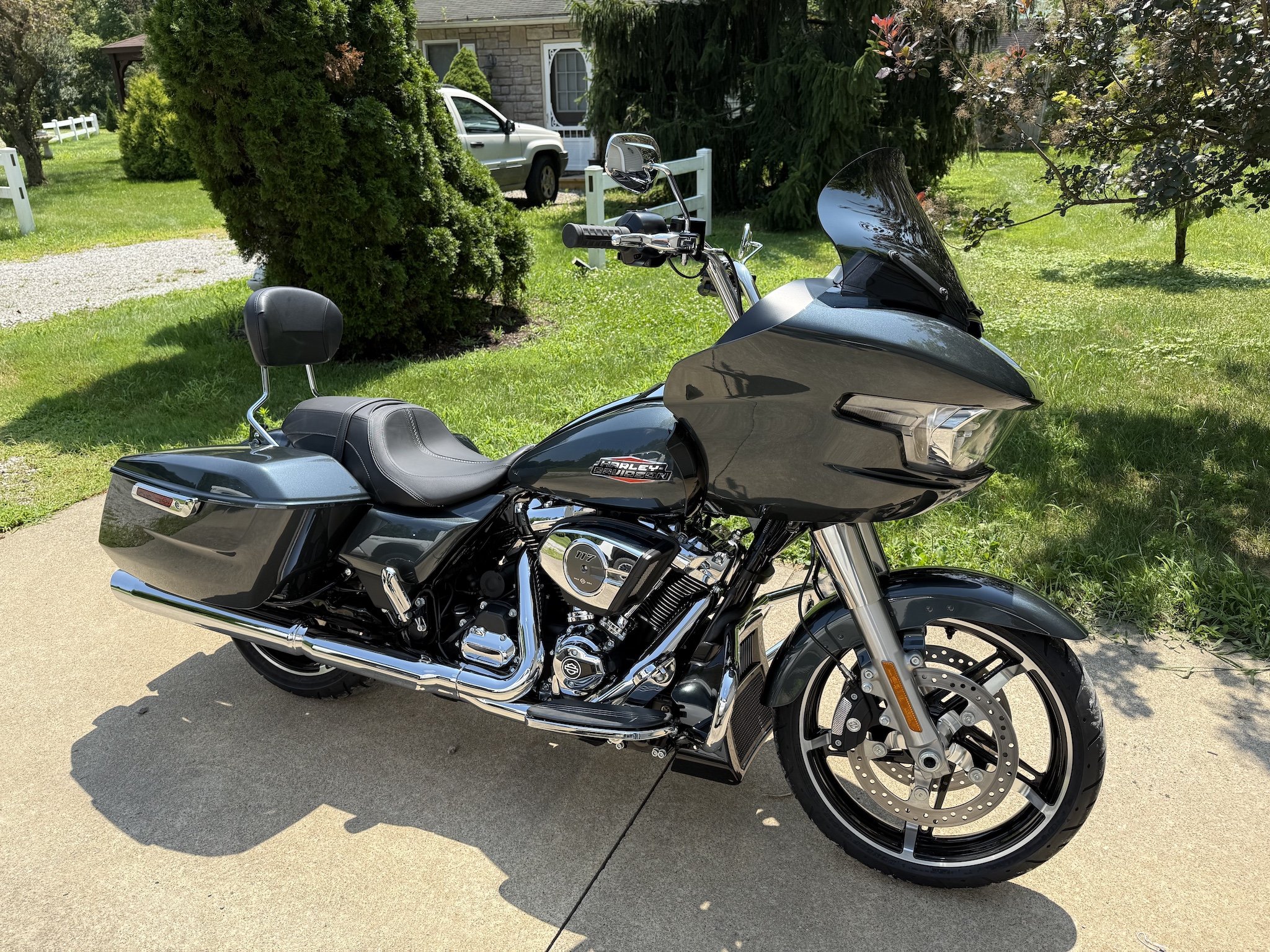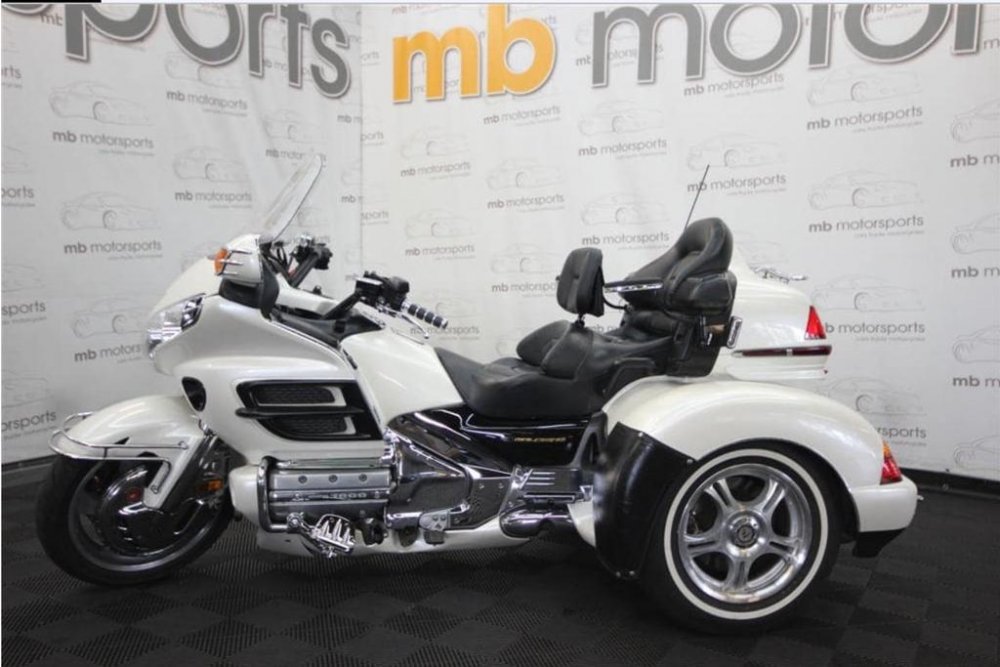-
Posts
18,110 -
Joined
-
Last visited
-
Days Won
240
Content Type
Profiles
Forums
Gallery
Events
Store
Everything posted by Freebird
-
I haven't paid for a while. This is an entirely different thing though. I think I once paid for more space but now they are charging to LINK. Very overpriced.
-
-
She wavers back and forth between Spyder, Slngshot, regular trike. We don't have time to ride the things that we have. We'll see.
-
Somebody else is looking too. NOT ME. But something has recently got into Eileen. She has been sending me ads from Ebay, Craigslist, and Cycle Trader for about a week now. Driving me nuts. She does NOT want me to sell the RSV and buy a Spyder...NOOOOOOO....this is for HER. Geezzzzzzzzzz...... Just say no...just say no....just say no.....
-
That is correct. You can see them but they don't have access to the members list. Spam protection.
-
I received a message from a member who wanted to send some new members in his area a PM but they were not listed in the members list. I have made a change now so trial members are included in the member's list during their trial membership period. They will be automatically removed from the list once their trial membership expires if they don't decide to become supporting members. This will allow those of you who wish to send them a personal welcome message to do so.
-
If nobody posts a picture before mine gets here, I'll post one when I install it.
- 50 replies
-

Speedohealer vs. SpeedoDRD
Freebird replied to Freebird's topic in Royal Star Venture Tech Talk ('99 - '13)
That works but if I remember right, the odometer is off also, just not as much. I don't remember but I'm thinking that it was off like 3 or 4 percent. So you wouldn't add it all back. -

Speedohealer vs. SpeedoDRD
Freebird replied to Freebird's topic in Royal Star Venture Tech Talk ('99 - '13)
The GPS method would certainly be the easiest and perhaps best way to do it. If you don't have a GPS though, there are numerous free speedometer apps that you can download for most any smart phone. It would be nice if you could calibrate the odometer and speedometer separately but since only one signal is sent from the speedometer sensor, that is not possible. They explain that on their website. You have to choose if you want the speedometer or the odometer to be dead on or if you would rather choose a compromise somewhere in between. I personally want my speedometer to be dead on. -
That's good because none of the units allow to you to adjust both separately. You can choose to get one or the other dead on or find a compromise somewhere in between that suits you. I agree with you though, I prefer that my speedometer be dead on.
- 50 replies
-

Speedohealer vs. SpeedoDRD
Freebird replied to Freebird's topic in Royal Star Venture Tech Talk ('99 - '13)
OK...that pushed me over the edge. $70.00 with free shipping is good enough for me to give it a try. Just placed my order. I ordered the Y1....I assume that is correct. -
I had a Lowrance 700 something or another Tri-Band. It had built in maps for most of the waterways that I boated including Lake Erie and Cumberland Lake. You could get other map programs to put in it. It showed a lot of detail including know sandbars and other underwater hazards. I was pretty pleased with it. I think it was around $650.00 or so.
-
Sure sounds like he got a raw deal. I hope that justice works in his favor this time.
-
It is a long shot but I've seen one case where the lean angle or "tip over" switch was bad and causing that exact problem.
-
I am going to buy a speedo calibrator for my '05 Midnight. I had a Speedohealer on the '99 and it worked great but the SpeedoDRD is about $30.00 or so cheaper. Anybody have any real experience with both? I like having it read right....just in case I ever get time to ride it again.
-
That is very well done. Can't tell what the engine is. I first figured VW but not so sure. Doesn't look like it from the little bit that I can see.
-

What is a Vanderwall Trike? We found out at the Sturgis Rally!!
Freebird replied to cowpuc's topic in Watering Hole
Very good report. I wonder who manufactures the engine. I'm sure a little GOOGLE searching will tell me. -
That really looks nice. You did a great job. Very clean looking.
-
The more I see it, the more I like it.
-
[h=2]Submitted by BongoBobNY Electrical Trouble Shooting Results/Help **UPDATED INFORMATION***[/h]OK, time for me to TFU (Test For Understanding)... You may be over testing, all you really need to do is first unplug the stator from the wiring harness located near the fuel pump, and arbitrarily label the 3 white wires A, B, and C. The stator end is the plug that heads down to the bottom of the bike, not the end that heads up to the wiring harness. Now, using an ohm meter on the highest scale, first read the resistance from each wire individually to ground. All 3 wires should read infinity ohms to ground! If there is NOT an open circuit to ground then one of your windings is shorted to ground and is defective! Next, with the ohm meter on a lower scale, read the resistance of all 3 combinations of wires, A to B, A to C, and B to C. All 3 readings should be almost equal, say within 1% of each other. If they are NOT almost equal, then one of the coils has a shorted turn or two and should be discarded! It is very important that these tests are done with the stator disconnected from the wiring harness!!! Of course, the bike should be turned off as well. The above is known as static testing, which should be done first. The next step is to dynamically test the stator! With the stator still unplugged, switch your multitester to AC volts using the 200-volt scale. The output of a stator is AC volts, just like a generator because, in essence, that is exactly what it is! You are going to be measuring the voltage between the 3 combinations of wires just like you did when you measured the 3 coil resistances, NOT each wire to ground! Start the bike, and measure the voltages at idle. You should see some arbitrary voltage somewhere between 10 - 20 volts AC on each combination of wires, and they should all be approximately equal. Next, increase your RPM's to say 2000 RPMs. Your AC voltages should be much higher, say around 50 volts AC on each combination of wires, and should all be still pretty much equal. Increasing your RPMs to 3000 or higher should give you voltages closer to 100 volts AC. The point being, the voltages should all increase uniformly with increasing RPMs! It is also important that these readings are done with the stator disconnected from the system as there could be the possibility of a defective R/R dragging down the readings when connected! I am going through this detailed information to make sure you, and any others reading this, are PROPERLY testing their stators operation! I would hate to see you condemn a stator if you did not test it the right way! I also need to mention a somewhat uncommon but possible failure with stators, and that is a thermal problem where when cold, the varnish on the wires acts as an insulator, but when it heats up the varnish breaks down and shorts out the windings either to itself or to ground. The result being your stator tests fine when the bike is cold, and you go for a ride. Sometime later the varnish breaks down and you loose charging to the battery once the bike heats up! So, what you have to do is warm up the bike considerably and then while still warm, repeat the above testing! OK, so if your stator is both statically and dynamically function properly, AND you have tested your battery with a load tester and you are absolutely sure it is good, then the last test is to determine if your Regulator/Rectifier is operating properly. With your multimeter now switched to DC volts this time, measure across the battery. You should see somewhere around 12.5 volts give or take. Now start the bike, and at idle you should see a little more voltage but not much. When you increase your RPM's the voltage should increase as well! At 2000 RPM you should see maybe 13.2 volts, give or take, and at higher RPM's you will see more voltage up to around 14.5 volts at high RPMs. There should be a point where with higher RPM's the voltage will no longer increase but remain the same regardless of how much more you increase the RPM's. This maximum voltage is what your regulator is set to regulate at, and no two regulators are exactly the same! I would discard any regulator that does not regulate at a minimum of 13.8 volts, and also discard it if it regulates anything higher than say 14.8 volts! The last test of the R/R is to test if it is rectifying properly! What a rectifier does is converts the AC voltage coming from the Stator to a DC voltage that the bike's electrical system uses. Rectifiers can go bad or worse only half bad, where they will sort of convert to DC but will also have some AC riding along with it! To properly check this you need a device called an oscilloscope, but you can effectively test this with your multimeter turned back to AC volts on a lower scale and put it across the battery with the bike running at a higher RPM. You should see darn near zero volts AC at all times and all RPMs! You may see some tiny amount of AC voltage that could be coming from anywhere, but it should be below 0.1 volts AC! If you are seeing anything like 1 volt or more, there is a chance part of your rectifier section of your R/R is defective and should be replaced!! Hope this helps you, and others out!!!
-
- 1
-

-
Sure not a lot out there that matches that description. I know nothing about this one but it is close. Flames though. https://xtremehelmets.com/daytona-skull-cap-slim-line-helmet-flames-blue/?utm_source=googlepepla&utm_medium=adwords&id=18283950120&gclid=EAIaIQobChMI_IThrJTK1QIVDIJpCh0F6wKAEAQYBSABEgJ6Q_D_BwE
-
Oh...ok....I have no idea where that one is. If we could find the post, I may have it archived. It would be way outdated by now anyway.
-
The map is still here. Just click "Member Map" in the menu bar.


